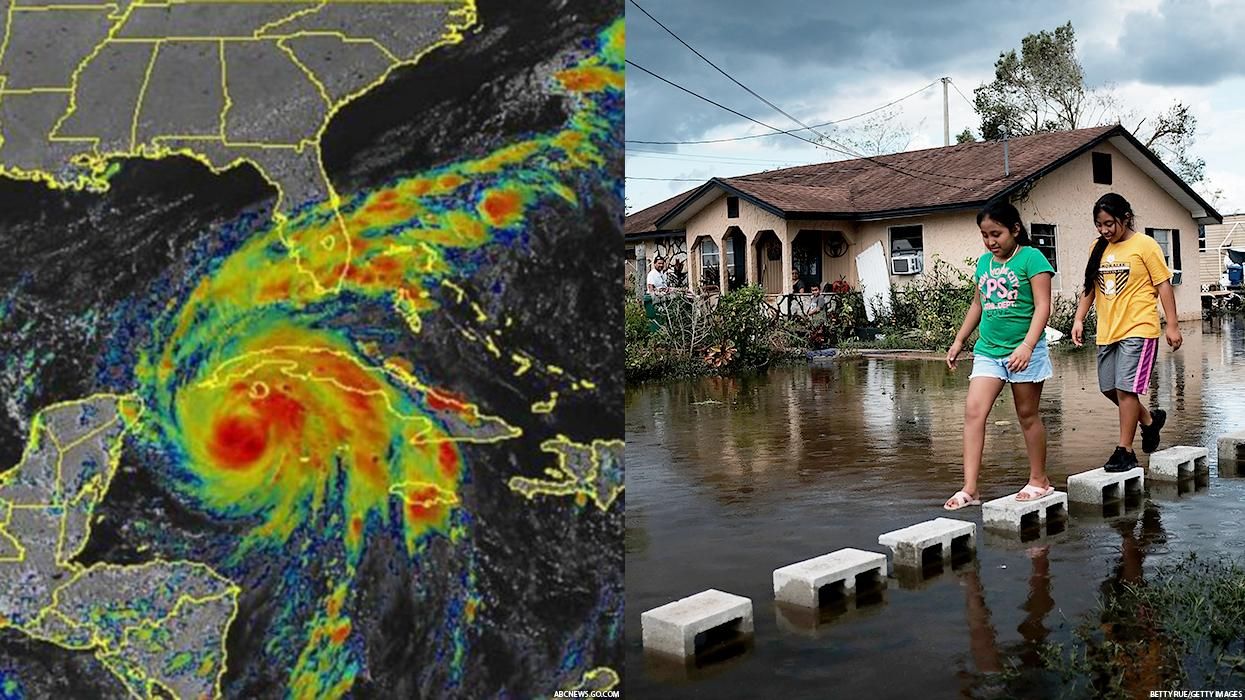As Hurricane Ian approaches the southeastern United States, low income cities and communities of color stand to lose the most from the devastating effects of environmental disasters.
In Florida, school boards across the state have announced preemptive closures for the coming week. Theme parks such as Disney World and Busch Gardens have closed facilities from Wednesday to Friday, and all flights from Tampa Bay have been cancelled after 5pm EST today until after the storm.
John Tiliacos, the executive vice president of operations at Tampa International Airport, told the New York Times: "We are talking potentially a lot of water that could be on our airport. To my knowledge, we have never had a storm of this magnitude that’s impacted us.”
In his address to Florida residents, Governor Ron DeSantis declared a state of emergency, approved by President Joe Biden. He added that while previous hurricanes have brought damage from strong winds, Ian poses a much greater risk due to the likelihood of flooding.
"Understand the impacts are going to be far, far broader than just where the eye of the storm happens to make landfall. In some areas, there will be catastrophic flooding and life-threatening storm surge," DeSantis said. "What we have here is really historic storm surge and flooding potential. The storm surges you're going to see generated from this is going to far eclipse previous storms."
Hurricane Ian will likely become a category 4 storm before it makes landfall midweek. Wind has increased from 45mph to 80mph in less than 24 hours, marking a rare case of intensification that experts say can be accredited to climate change.
Jim Kossin, a senior scientist at the Climate Service, told CNN: "Climate change is increasing both the maximum intensity that these storms can achieve, and the rate of intensification that can bring them to this maximum."
Across the country, environmental disasters have devastated low income communities. As recently as August, heavy rainfall and subsequent flooding in Jackson, Mississippi damaged the city's largest water treatment plant. Residents have been without clean drinking water since, in an eerily similar case to Flint, Michigan.
Like Jackson, Flint is a predominantly Black area overlooked by state government for infrastructure funding. This trend is so severe in minority and low income communities that the EPA recently created a Civil Rights office to address the systemic inequality.
This inequity spreads to U.S. territories across the ocean, as communities in Puerto Rico have long felt the devastating effects of hurricanes against insubstantial infrastructure. In 2017, Hurricane Maria caused the second longest blackout in world history. Just last week, Hurricane Fiona exacerbated blackouts on the island, further damaging its already fragile power grid.
As it reaches U.S. mainland, Hurricane Ian threatens underprivileged areas in Florida and up the East Coast. As many low income communities have predominantly non-white residents, people of color are being disproportionately affected by climate change and the environmental disasters that follow.
- More Americans Are Moving Into Harm's Way as Climate Disasters Increase - Advocate Channel ›
- Climate Change Disproportionately Impacts Latino Communities - Advocate Channel ›
- Rural Americans Aren't Receiving Emergency Alerts During Disasters - Advocate Channel ›
- Southern California Hit by 5.1 Magnitude Earthquake Amidst Hurricane Hilary ›
- Tropical Storm Ophelia Closes In on the East Coast ›


















































